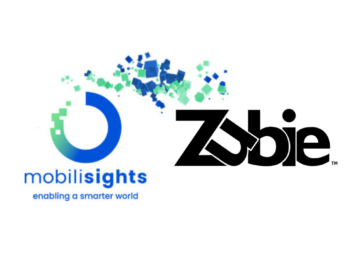
One question we frequently get asked by our customers is which metrics are other fleet managers paying attention to. Inevitably, they want to understand if there’s something they’re missing – are there other areas they can look at to reduce cost, reduce risk, improve efficiency.
The primary reason we hear customers switching to Zubie from other telematics providers is the ease of using our dashboards. For those coming from “track and trace” telematics implementations, they simply haven’t had anything other than location data to look at anyway. Other who have received data feeds simply lack the time and our capacity to analyze all the data — they need something straight forward. With that in mind, here are some of the key metrics fleets are tracking, beyond location, to help improve their business:
1. Hard Braking & Rapid Acceleration Reports
Everyone has those moments – had to hit the brakes hard to avoid and accident, or hit the gas to accelerate to catch a light. However, drivers who consistently exhibit these behaviors are costing your business money — either through increased gas costs or increased maintenance costs. If it costs you an extra brake job and oil change on a single vehicle, it starts to add up. Monitoring vehicle wear and tear based on driver performance allows you to do some employee coaching and save yourself maintenance cost and headache down the road.
*Note — Zubie Fleet Connect identifies hard braking as a drop of -7 mph in one second or more. The same applies to rapid acceleration; a +7 mph in one second or more.
2. Visits & Trip Metrics
Zubie Fleet Connect allows you to set up a custom “geo-fence,” which monitors vehicle activity within a selected area. If you work based on billable hours for certain customers,- you can see how long staff members were at the jobsite working and use the reporting to validate any misperceptions a client may have. It also helps you monitor if the crew is actually working within the selected area, giving you the confidence you need that your teams are doing the jobs for which you’re paying them.
3. Idle Time
Leaving the vehicle running wastes fuel, and it drives up costs for your business. By monitoring your fleet’s idle time, you can work to reduce those charges. At Zubie, idle time falls into two categories: “Overall Idle Time” and “Stop Idling”. Stop Idling means any instance of the vehicle idling for more than 2 minutes, which is longer than most stops at intersections. This means the vehicle is running without an apparent reason. By watching these stats, Zubie customers can identify abusers and any routes that have large amounts of traffic and rethink their routing.
4. Speeding
Look, we all speed every now and then – that’s to be reasonably expected. But identifying an employee with a lead foot can be critical. Of course, there’s a cost in gas, but more importantly, it increases the risk to the health of your driver, your vehicle, and the people around them. Not to mention, if you live in a small community, the embarrassment of having someone tell you about the bad behavior of one of your drivers. Having a fleet tracking system to monitor the speed on your vehicles is helpful to know how drivers are treating the vehicle, and how risky their behavior is. And, on the flip side, making sure your drivers are keeping the speeding to a minimum can help you reduce insurance rates.
5. Engine “On” Hours
It’s also vital to monitor the fleet’s health — the conditions of your vehicles. With Engine On metrics, you can filter reports on overall mileage, distance traveled, and engine hours. These segments allow you to plan out vehicle maintenance, so you don’t run into any issues down the road.
Will Fleet Tracking Work For You?
We hope those tips help you improve your fleet management. Zubie is fleet management made simple — simple to install, simple to use, with simple pricing. No surprises, no hidden fees. Let us know what we can do to help Zubie work for your fleet.
Zubie. Plug in. Connect. Go.
